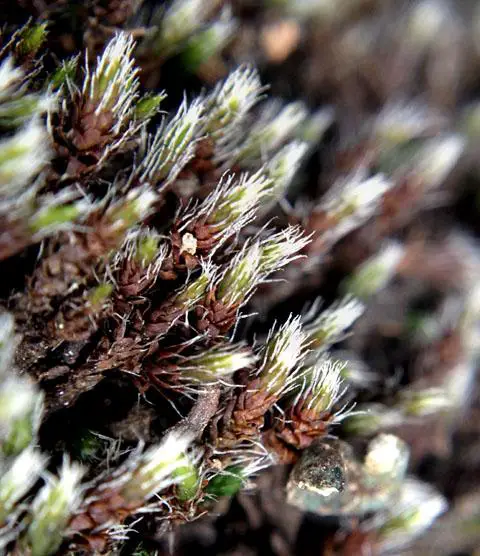Grimmia minuta: The Mighty Mini Moss Taking on Rocky Challenges
Affiliate Disclaimer: As an affiliate, we may earn a small commission when you make a purchase from any of the links on this page at no additional cost to you!

2.jpg from: https://nathistoc.bio.uci.edu/Mosses/Grimmia lisae/index.html
Introduction
Today we’re diving into the fascinating world of Grimmia minuta Müll.Hal., a tiny but mighty moss species in the Grimmiaceae family, commonly known as Grimmia. This diminutive plant packs a punch when it comes to its unique adaptations and ecological importance. Get ready to be amazed by the mini but mighty Grimmia minuta!
Background on Grimmia Mosses
The Grimmiaceae family, which includes Grimmia minuta, is a group of mosses known for their small size and ability to grow in harsh, exposed habitats like rocks and cliff faces. There are over 80 Grimmia species found across the globe. These hardy little plants are part of the Bryophyta division and Bryopsida class.
The Marvelous Morphology of Grimmia minuta
Grimmia minuta is one of the smallest mosses around, with individual plants measuring just 2-4 mm tall. But don’t let its size fool you – this moss is a master of adaptation. Its leaves are lance-shaped and have a special hair-like tip called an awn that helps protect it from intense sunlight and retain moisture. The leaves also have thick cell walls that prevent water loss.
G. minuta’s spore capsules are another marvel, perched atop a short seta (stalk) and sporting a peristome, a fringe of tooth-like structures that aid in spore dispersal. The capsules are only about 1 mm long, showcasing this moss’s miniature magnificence.
Where in the World is Grimmia minuta?
This tiny moss has a wide global distribution, found on multiple continents including North America, Europe, Asia, Africa, and Australia. It grows in dry, exposed rocky habitats like boulders, cliffs, and rock outcrops. Grimmia minuta forms compact cushions or tufts, often nestled in small crevices.
Ecological Roles and Rugged Resilience
Grimmia minuta and its fellow Grimmia mosses play important roles in their rocky ecosystems:
- Their dense growth helps stabilize soil and prevent erosion
- They contribute to nutrient cycling by trapping dust and organic matter
- The moss cushions provide shelter for tiny invertebrates
- They are pioneer species, being some of the first plants to colonize bare rock surfaces
Grimmia mosses have incredible resilience, able to survive extreme temperatures, drought, and high UV radiation. They can suspend their metabolism when conditions are unfavorable, then spring back to life when moisture returns.
| Adaptation | Function |
|---|---|
| Thick cell walls | Prevent water loss |
| Hair-like leaf tips (awns) | Reflect sunlight, trap moisture |
| Compact growth form | Retain moisture, shelter from wind |
| Ability to dry out and rehydrate | Survive harsh dry periods |
Conclusion
Grimmia minuta may be small, but it’s certainly not insignificant. This mighty moss and its Grimmia relatives are masters of survival in unforgiving rocky habitats around the world. Next time you’re out hiking and spot a patch of Grimmia nestled on a boulder, take a moment to appreciate the rugged resilience and ecological importance of these miniature marvels.
What other small but mighty plants have you encountered in your adventures? Let us know in the comments!
